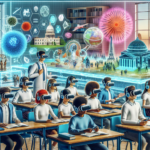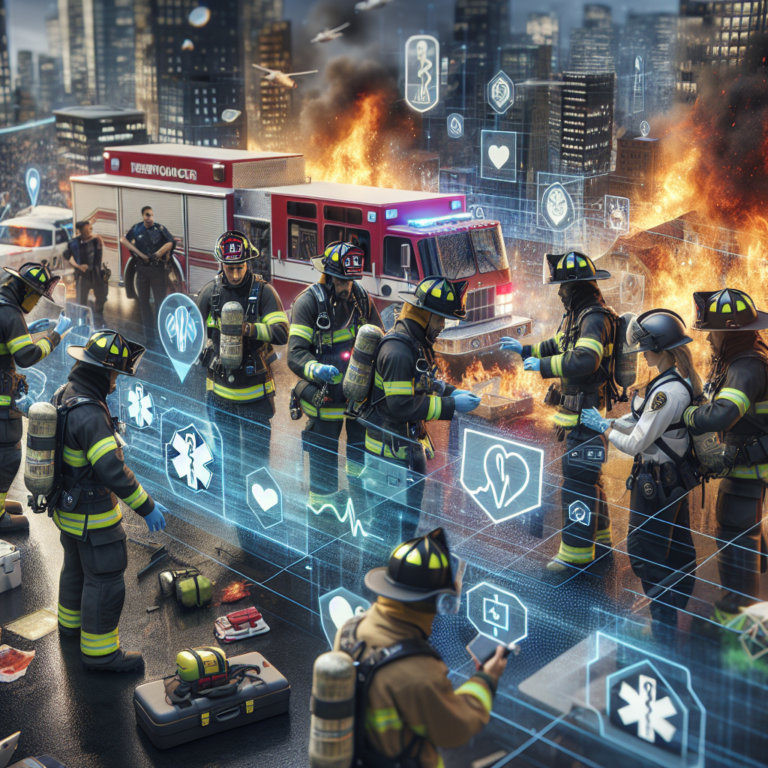Revolutionizing Emergency Response Training: The Future Awaits with Augmented Reality 🌟
Introduction: A New Era in First Responder Training
The world of emergency response is ever-evolving, and as new technologies emerge, so do innovative training methods. One of the most exciting advancements is the application of Augmented Reality (AR). Imagine a training scenario where first responders can immerse themselves in realistic simulations, prepare for crises, and refine their skills—all while using AR technology. This groundbreaking approach promises to transform the way we train our heroes, ensuring they are better equipped to handle emergencies when they arise.
What is Augmented Reality? 📲
Before diving into its application in emergency response training, let’s explore what augmented reality actually means. AR overlays digital information onto the real world through smart devices like smartphones, tablets, and AR glasses. Unlike virtual reality, which creates a completely simulated environment, AR enhances the existing environment, making it possible for users to interact with both the digital and physical worlds simultaneously.
Benefits of AR in First Responder Training
Incorporating Augmented Reality into emergency response training holds numerous benefits that can significantly enhance the efficacy of training programs. Here are some key advantages:
- Realistic Training Scenarios: AR provides lifelike simulations of emergency situations, allowing first responders to practice their skills without the risks associated with live training.
- Immediate Feedback: Trainees can receive instant evaluations on their performance, helping them learn from mistakes and improve rapidly.
- Cost-Effective: AR can reduce the need for expensive physical training equipment and resources, leading to significant savings in training budgets.
- Accessible Training: First responders can access AR training anywhere, enabling continuous learning and practice, no matter their location.
How AR Improves Critical Skills
1. Decision-Making Under Pressure
During emergencies, making quick and informed decisions can save lives. AR training simulates high-stress scenarios where first responders must analyze information and react swiftly. This prepares them for real-life situations by helping them:
- Practice situational awareness
- Identify hazards in real-time
- Make decisions based on evolving circumstances
2. Collaborative Training Environments
AR fosters teamwork by allowing multiple users to engage in a shared training scenario. First responders can collaborate in real-time, enhancing their communication skills and building camaraderie. This approach allows teams to:
- Work together on complex rescue scenarios
- Develop trust and understanding among team members
- Enhance coordination in high-pressure situations
3. Enhanced Technical Skill Development
Specific technical skills are vital for first responders. AR training can provide detailed guidance on operating complex equipment, performing medical procedures, or navigating hazardous environments. Through AR, they can:
- Interact with 3D models of equipment
- Follow visual step-by-step instructions for procedures
- Receive real-time assistance from AR overlays, improving their proficiency
Case Studies: AR in Action
Several organizations are already leveraging AR for emergency response training, showing promising results:
1. Fire Departments
Fire departments have begun using AR to simulate fire scenarios where trainees learn to navigate flames and smoke. Through AR, they can practice various firefighting techniques and strategies, which has already shown an increase in response efficiency.
2. Medical Response Units
Medical response units are utilizing AR for training on complex medical procedures, allowing trainees to practice life-saving techniques in a safe, controlled environment. This innovative method ensures they are well-prepared for real-world emergencies.
3. Law Enforcement
Law enforcement agencies are integrating AR to simulate crisis situations where tactical response and judgment are critical. By experiencing virtual scenarios, officers refine their decision-making skills and improve their readiness for unpredictable events.
Challenges and Considerations
While the potential benefits of AR in emergency responses are enormous, several challenges need to be addressed:
- Technology Limitations: The effectiveness of AR depends on the availability of advanced technology and reliable internet connectivity.
- Cost of Implementation: Initial investment in AR technology may be substantial, posing a barrier for some organizations.
- Training Needs: First responders require adequate training to effectively utilize AR tools, which may necessitate additional resources.
The Future of AR in Emergency Training
Looking ahead, AR is poised to redefine emergency response training by providing innovative solutions that improve outcomes for first responders. As technology continues to advance, we can expect the following trends:
- Greater Integration: More AR tools will be integrated into existing training programs, enhancing traditional methods.
- Customization: Tailored AR experiences will cater specifically to the unique needs of various emergency response teams.
- Increased Collaboration: Enhanced AR tools will foster inter-agency collaboration, allowing different teams to train together more effectively.
Conclusion
Augmented reality is not just a futuristic concept; it is a transformative tool that can enhance emergency response training for first responders. By embracing this technology, we are investing in a safer, more efficient future for our communities. As we harness the power of AR, we unlock the potential to train our heroes like never before.




0 Comments